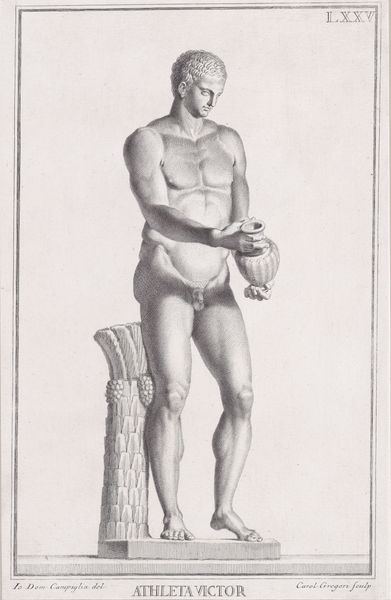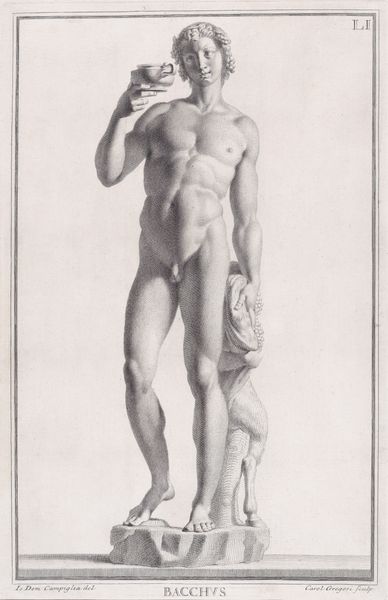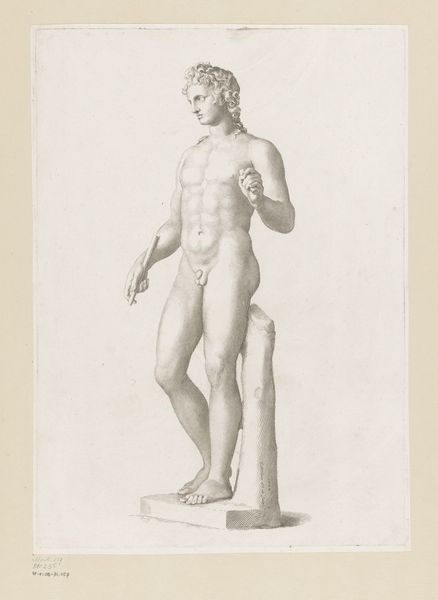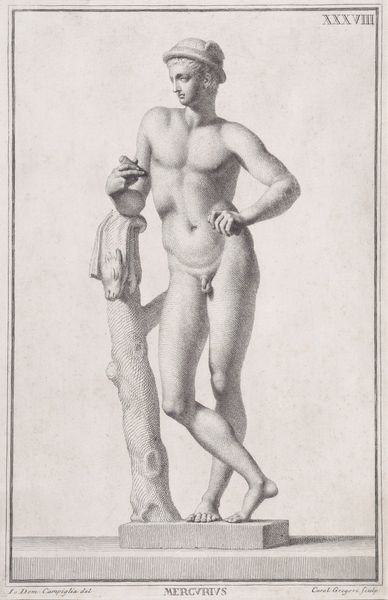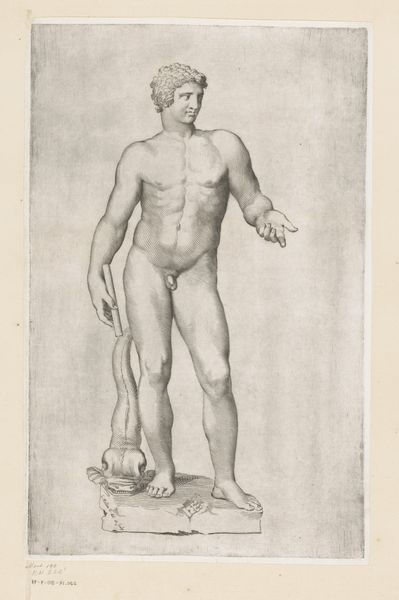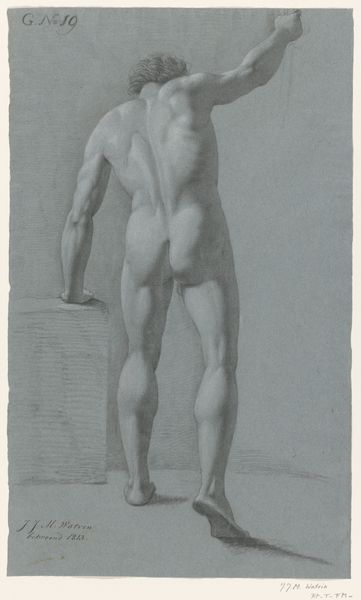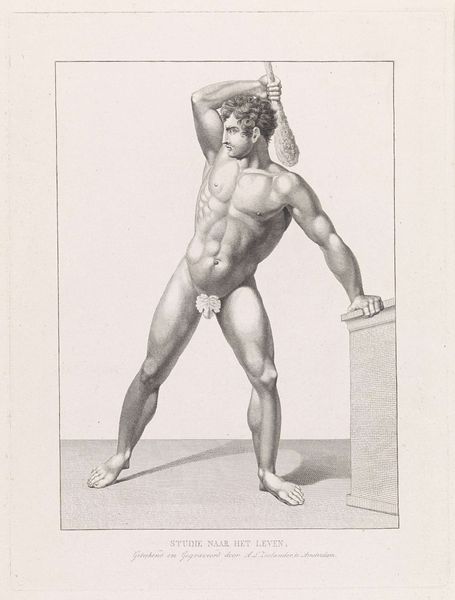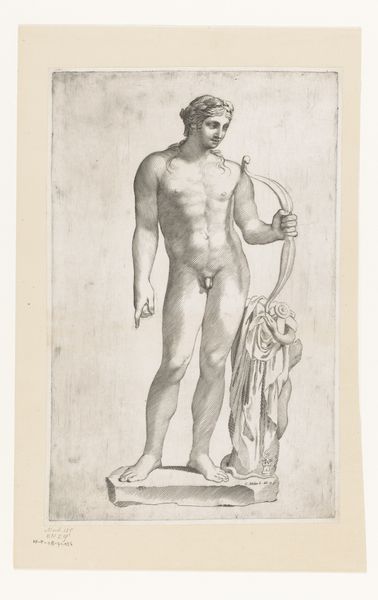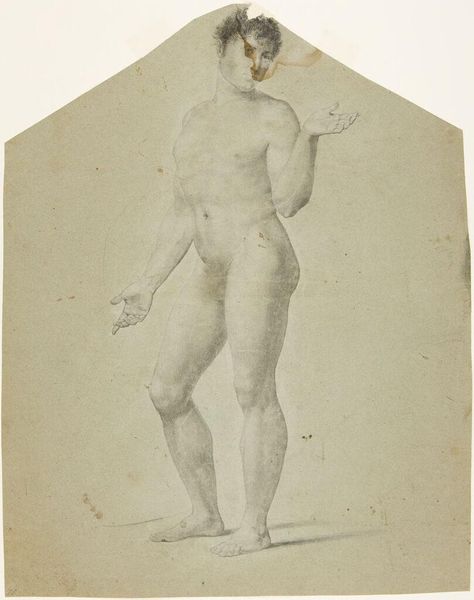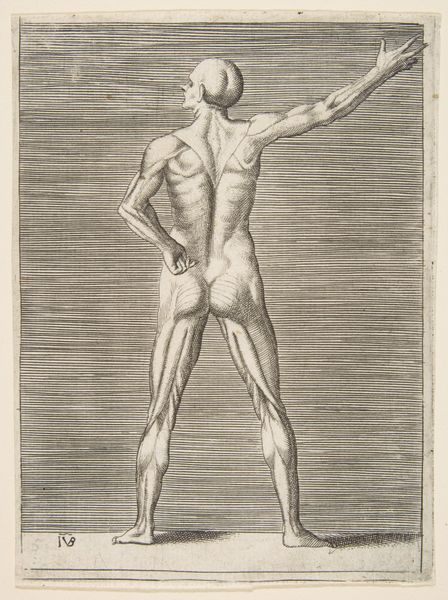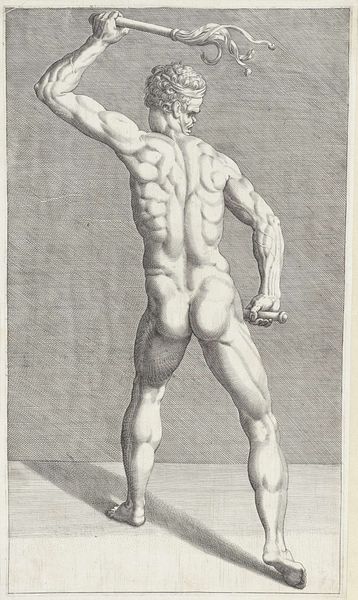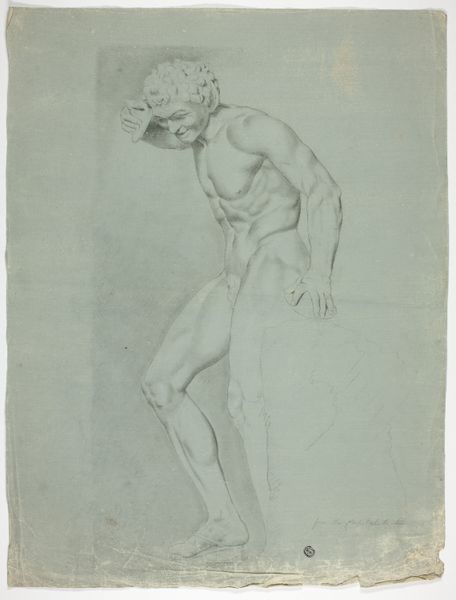
Plate XXXVII (37): Mars, from "Museum Florentinum" (Statuae antiquae dorum et virorum illustrium) 1734
0:00
0:00
drawing, print, engraving
#
drawing
#
baroque
# print
#
greek-and-roman-art
#
classical-realism
#
figuration
#
form
#
line
#
history-painting
#
nude
#
engraving
Dimensions: Sheet: 14 15/16 × 10 1/16 in. (38 × 25.5 cm) Plate: 14 3/16 × 8 7/8 in. (36 × 22.5 cm)
Copyright: Public Domain
Carlo Gregori created this print of Mars, from "Museum Florentinum," using etching and engraving. These printmaking techniques, while not as materially rich as sculpture, depend on highly skilled labor. Notice how the crisp lines define the musculature of Mars, and the texture of the tree trunk beside him. The linear precision evokes the smooth, hard surfaces of classical sculpture. Gregori has translated the three-dimensional form into a two-dimensional image, capturing the essence of the original marble. The etching process allowed for the creation of fine details, while the engraving provided depth and tonal variation. Prints like these played a crucial role in disseminating knowledge of classical art during the 18th century, pre photography. They made art accessible to a wider audience through mass production. While the original sculpture was the product of a master’s hand, this print relied on another kind of skill, allowing for the democratization of taste and appreciation, as well as reflecting a growing industry of print production. Ultimately, the value of this print lies not only in its aesthetic qualities, but also in its role as a facilitator of cultural exchange, blurring the boundaries between art, craft, and commerce.
Comments
No comments
Be the first to comment and join the conversation on the ultimate creative platform.

